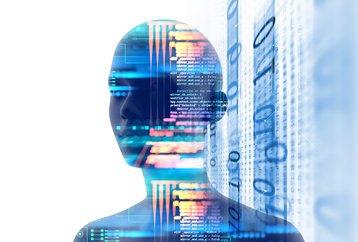Increasing data center efficiency and reducing the overall energy consumption are today major concerns for both the industry and indeed wider society. As the amount of data being generated, stored and shared continues to grow, the outcome will inevitably cause a demand for physical data center space to increase.
Software control of both IT equipment and the supporting data center infrastructure has long been a fundamental tool for monitoring and managing both operational and energy efficiency. As financial pressures, data regulations and corporate social responsibility (CSR) demand data center operators to stay focused on improving efficiency, such tools will become more important and increasingly integrated.
Bring on the brains
Furthermore, it is predicted that both developers and end-users will make use of the most cutting-edge advances in software technology, including artificial intelligence (AI), to meet the challenges posed by the critical importance of energy efficiency.
Aside from a data center’s IT load, the largest consumer of power is its cooling system. Vital to maintaining operating temperatures at acceptable levels, cooling is nevertheless a major drain on the energy required and much effort is now expended in organizing it efficiently.
Clearly the task of cooling an IT room is a complex one and requires consideration of several tradeoffs between the demands placed on various elements of the cooling system. It requires the adoption of a holistic approach to the cooling of a data center and use of an integrated software suite that monitors all aspects of the IT load, supporting infrastructure and the surrounding environment.
There have long been software tools to assist in the management of all aspects of a data centers operation. Systems management software allows operators to monitor issues like server performance, disk utilisation and network traffic congestion. In a foreshadowing of the Internet of things (IoT), embedded processing elements on individual pieces of equipment warn give notice of servicing and update schedules and warn of potential malfunctions.
Separate from systems management software suites, data center infrastructure management (DCIM) tools assist in the management of supporting infrastructure such as cooling and backup power supply systems. Facilities management software, like building and energy management systems (BMS), assist in the monitoring of building or site-level functions including air conditioning and electricity supply.
As energy management becomes ever more critical it will be necessary for all of these systems to work more closely together. Given the complexity of managing all of these systems, self-learning systems or artificial intelligence (AI) will increasingly be deployed in the quest for efficiency.
Spreading the load
Innovative startups are using intelligent machines with self-learning algorithms to optimize the allocation of the IT load itself so that optimal cooling can be achieved. Load-balancing systems are already a familiar feature of systems management software suites, but their focus is on ensuring an equitable distribution of resources from the point of view of maximizing the available IT capacity in a data center. The latest generation of software tools also take account of the effect of loads on the cooling requirements so that the energy implications can be factored into decisions.
The latest generation of load-balancing tools take account of cooling requirements so that the energy implications can be factored into decisions.
There are of course other innovative efforts in place to help reduce power consumption in data centers. This includes research into new basic computing elements to replace silicon, especially as the venerable Moore’s Law, which predicts the regular achievement of ever more powerful computing performance from ever smaller amounts of silicon, approaches its physical limits. Such promising developments as quantum computing, superconducting cold logic and optical computing are all being investigated but for the foreseeable future we will still be building servers and data centers around silicon chips.
Finding an ever-more logical, organized and cost-effective way to manage such complex systems however, is of paramount importance. Integration between management software and artificial intelligence will be key for ensuring both performance and energy efficiency in all future data centers, no matter the size.
Stefano D’Agostino, is software solutions business manager for the data center and IT business at Schneider Electric


